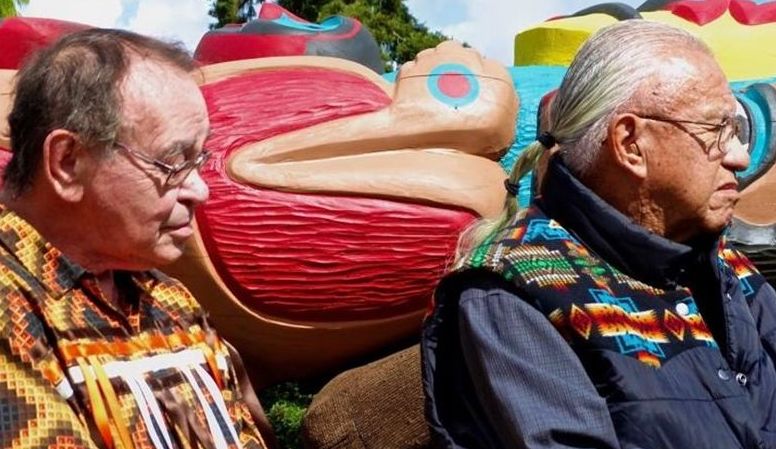FIRST PEOPLES
Hank Adams Tribute
1943 – 2020
By LLyn De Danaan

I met Hank Adams (Assiniboine-Sioux) early in my The Evergreen State College faculty career. Hank came to Evergreen to work on his unfinished degree. It was the early ’70s when he asked me to be his faculty for independent studies. I didn’t know his history. He was a long-time activist working with, among other projects, the National Congress of American Indians. He had been a research assistant to NCAI Executive Vine DeLoria, Jr. He worked with Frank’s Landing families and a coalition of Northwest Tribes to develop plans to fight for fishing treaty rights, abrogated by the State of Washington. Hank was known as a “strategist” and some have said that without him there would have been no US v Washington, the case that led to the 1974 Boldt decision that affirmed the treaties guaranteed tribal rights to fish. He was also a key figure in resolving the siege at Wounded Knee in 1973. His accomplishments, publications, and accolades are too numerous to recount in this brief personal tribute.
I was ignorant of most of this. The man I knew was a mild-spoken, gentle person. Faculty/student roles were switched quickly. I had worked briefly with the iconic Skokomish culture bearer Bruce “Subiyay” Miller and basket weavers Emily Miller and Louisa Pulsifer on a film about basketry. Bruce and I were friends from the late 1960s and until his passing. But I knew nothing about the history of tribal struggles in the Northwest nor specifically of treaty rights. I was about to learn.
Hank was my teacher. He was patient. He asked me to read a thick, typed manuscript he was working on. It was, in large part, an explication of Grant’s Peace Policy, a policy that promoted assimilation and placed Indian agencies in the hands of religious groups. The policy led to boarding schools and the breaking up of reservations into allotments. The manuscript led me to years of research and immersion in indigenous issues.
Once, I visited Hank’s home. Everywhere were cardboard boxes filled with files of his research. On the couch, on the stairsteps, and stacked against walls. I wondered how one could live like that. A few years later, my own home looked pretty much the same after I was called to work for the Puyallup Tribe of Indians as an anthropologist expert witness in the shellfish treaty case that followed the Boldt decision.
Knowing Hank Adams, and learning from him, prepared me to say yes to the Puyallup and to Judy Wright’s (Puyallup) and Margaret Ward’s (Quinault) requests. They changed my life. I am deeply indebted to them and especially to Hank Adams.
He passed December 21, 2020, at age 77.
We encourage readers to contact us with comments and corrections. Disclaimer
